Introduction
Life processes are fundamental activities that occur in living organisms, essential for maintaining life. These processes include nutrition, respiration, transportation, and excretion, which are critical for organisms to grow, survive, and reproduce. Understanding these processes is vital for appreciating how living systems function and sustain themselves.
What Are Life Processes?
Life processes refer to essential biological functions that all living organisms perform to sustain life. These processes help maintain homeostasis, or the balance required for an organism to function properly.
Types of Life Processes:
- Nutrition: Involves obtaining and utilizing food for energy.
- Respiration: The process of breaking down food to release energy.
- Transportation: Movement of substances within an organism.
- Excretion: Removal of metabolic waste products from the body.
Additional Processes:
- Growth: Increase in the size and number of cells.
- Reproduction: Production of offspring to ensure the survival of species.
- Response to Stimuli: Organisms’ ability to respond to their environment, such as moving toward light or avoiding danger.
Key Concept:
- Metabolism: The sum of all chemical reactions occurring in the body, including catabolic reactions (breaking down molecules) and anabolic reactions (building up molecules).
Practice Questions:
- Question: Define metabolism. How is it related to life processes?
- Answer: Metabolism refers to the sum of all biochemical reactions occurring in an organism. It involves both breaking down molecules for energy (catabolism) and building up molecules for growth and repair (anabolism). Metabolism drives life processes like nutrition, respiration, and excretion.
Nutrition
Nutrition is the process by which organisms obtain energy and materials from their environment. It is essential for growth, repair, and maintaining life processes. Depending on how organisms acquire food, nutrition can be classified into two main types: autotrophic and heterotrophic nutrition.
Autotrophic Nutrition:
- Autotrophic organisms, such as plants, synthesize their own food through photosynthesis. In this process, sunlight provides the energy required to convert carbon dioxide and water into glucose and oxygen.
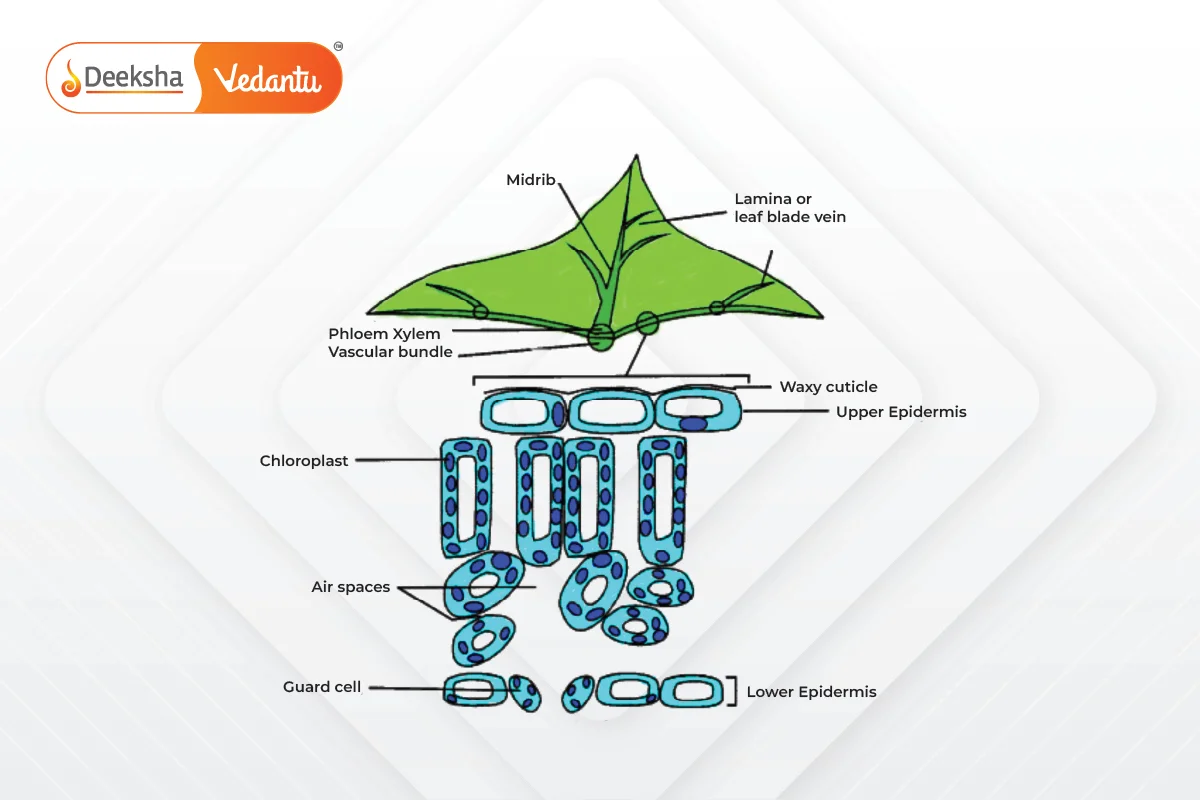
- Light-dependent reactions: Occur in the thylakoid membranes of the chloroplasts, where sunlight is absorbed and used to produce ATP and NADPH.
- Light-independent reactions (Calvin cycle): Occur in the stroma of the chloroplasts, where ATP and NADPH are used to convert
into glucose.
- ATP: Adenosine triphosphate is a molecule that provides energy for the Calvin cycle, which converts carbon dioxide into glucose.
- NADPH: Nicotinamide adenine dinucleotide phosphate provides electrons for the Calvin cycle to reduce carbon dioxide into glucose.
Heterotrophic Nutrition:
Heterotrophic organisms, like humans, rely on other organisms for food. There are three main types of heterotrophic nutrition:
- Holozoic Nutrition: Involves the ingestion of solid food. Example: Humans.
- Saprophytic Nutrition: Organisms feed on dead and decaying matter. Example: Fungi.
- Parasitic Nutrition: Organisms derive nutrition from living hosts, often harming them. Example: Tapeworm.
Human Digestive System:
- Ingestion: Taking in food.
- Digestion: Breaking down food into simpler forms through mechanical and chemical processes.
- Absorption: Nutrients from digested food are absorbed into the bloodstream, primarily in the small intestine.
- Assimilation: The absorbed nutrients are utilized by cells for energy, growth, and repair.
- Egestion: The elimination of undigested food from the body.
Key Organs in Human Digestion:
- Mouth: Digestion begins with the mechanical breakdown of food and the action of salivary enzymes like amylase.
- Stomach: Gastric juice containing pepsin and hydrochloric acid helps in protein digestion.
- Small Intestine: Digestion is completed, and nutrients are absorbed.
- Large Intestine: Water is reabsorbed, and waste is prepared for elimination.
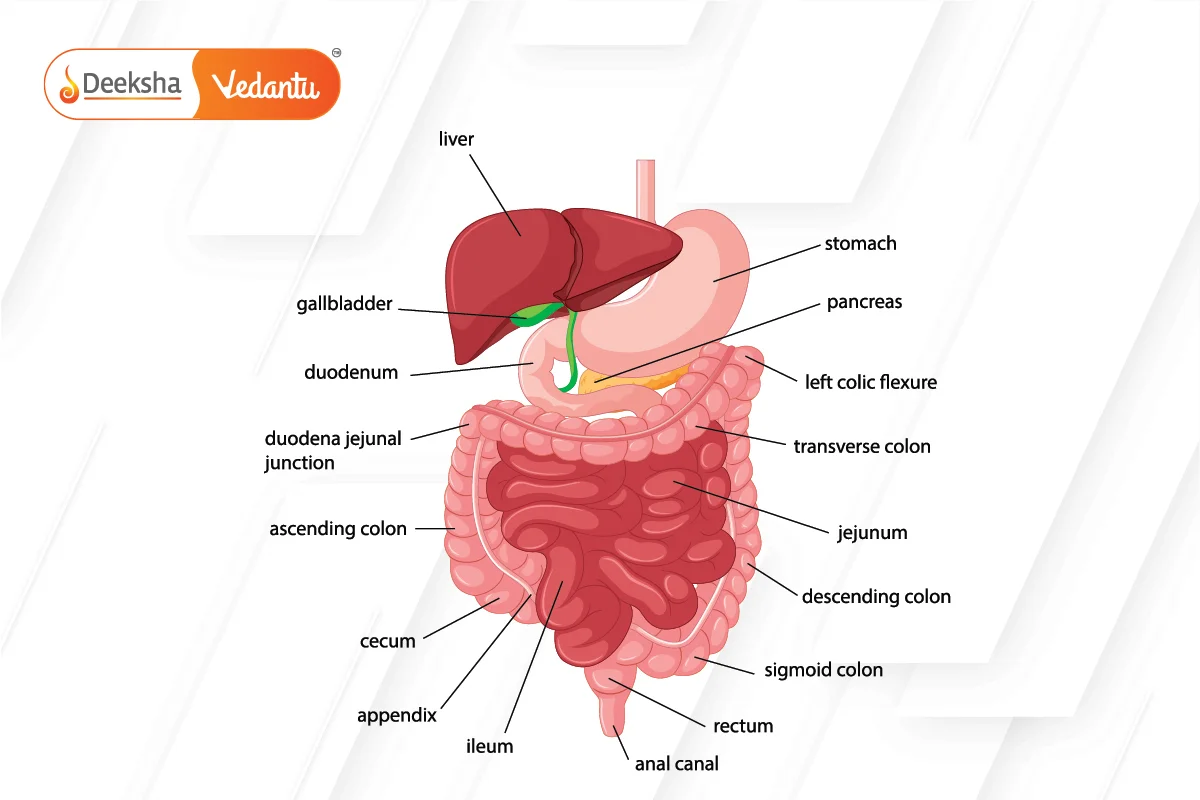
Real-Life Applications:
- Understanding human nutrition helps in developing dietary plans and managing conditions like malnutrition and obesity.
Practice Questions:
- Question: Explain the process of photosynthesis in detail.
- Answer: Photosynthesis occurs in two stages: light-dependent reactions and light-independent reactions (Calvin cycle). In the first stage, sunlight is absorbed by chlorophyll, and water is split into oxygen, releasing energy in the form of ATP and NADPH. In the second stage,
is converted into glucose using ATP and NADPH.
- Answer: Photosynthesis occurs in two stages: light-dependent reactions and light-independent reactions (Calvin cycle). In the first stage, sunlight is absorbed by chlorophyll, and water is split into oxygen, releasing energy in the form of ATP and NADPH. In the second stage,
Respiration
Respiration is a biochemical process that breaks down food molecules (mainly glucose) to produce energy in the form of ATP. All living organisms respire to obtain energy for their cellular processes.
Types of Respiration:
- Aerobic Respiration: Takes place in the presence of oxygen. It is the most efficient form of respiration, releasing a large amount of energy.
- Anaerobic Respiration: Occurs in the absence of oxygen. It produces less energy compared to aerobic respiration.
- In yeast:
- In muscles:
Respiratory System in Humans:
- Nose: Air enters through the nostrils and is filtered by cilia.
- Trachea and Bronchi: Air passes through these tubes to reach the lungs.
- Lungs: Oxygen is exchanged for carbon dioxide in the alveoli (tiny air sacs).
- Diaphragm: Plays a crucial role in the breathing process.
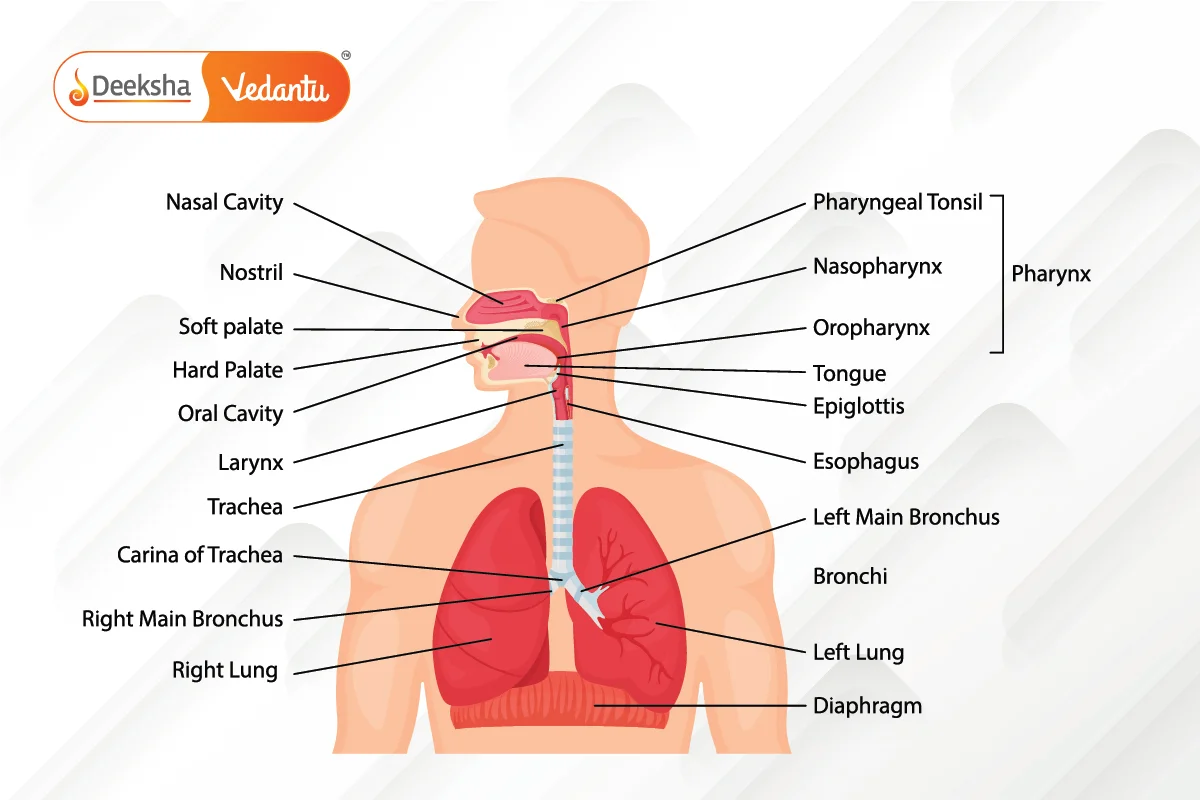
- Anaerobic respiration in yeast is used in baking (production of carbon dioxide causes bread to rise) and brewing (ethanol production in alcohol).
- Aerobic respiration powers most of the activities in living organisms, ensuring survival and growth.
Practice Questions:
- Question: Compare the energy yield from aerobic and anaerobic respiration.
- Answer: Aerobic respiration yields more energy (about 38 ATP molecules per glucose molecule) compared to anaerobic respiration, which produces only 2 ATP molecules per glucose molecule.
Transportation
Transportation involves the movement of nutrients, gases, and waste materials within an organism to maintain homeostasis. In higher animals, this is achieved through specialized systems like the circulatory system and vascular system in plants.
Transportation in Humans:
- Circulatory System: Composed of the heart, blood vessels, and blood, this system ensures the continuous circulation of nutrients, gases (like oxygen), and waste products.
- Heart: A muscular organ that pumps blood throughout the body. It has four chambers—two atria and two ventricles.
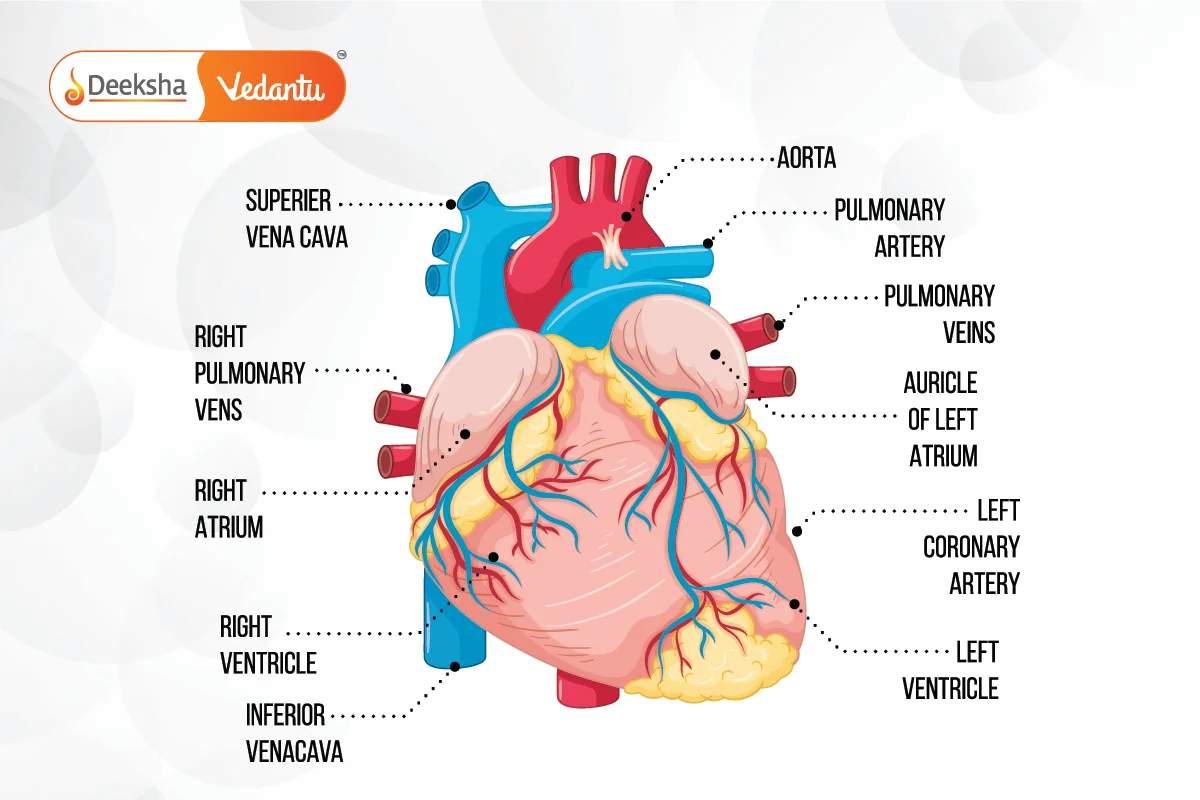
- Blood Vessels: Arteries carry oxygenated blood, veins carry deoxygenated blood, and capillaries allow exchange of materials.
- Blood Composition:
- Red Blood Cells (RBCs): Carry oxygen using hemoglobin.
- White Blood Cells (WBCs): Fight infections.
- Platelets: Help in blood clotting.
- Plasma: The liquid part of blood, carrying nutrients and waste products.
Double Circulation:
- Blood passes through the heart twice during each circulation: once to the lungs for oxygenation (pulmonary circulation) and once to the rest of the body (systemic circulation). This ensures the separation of oxygenated and deoxygenated blood.
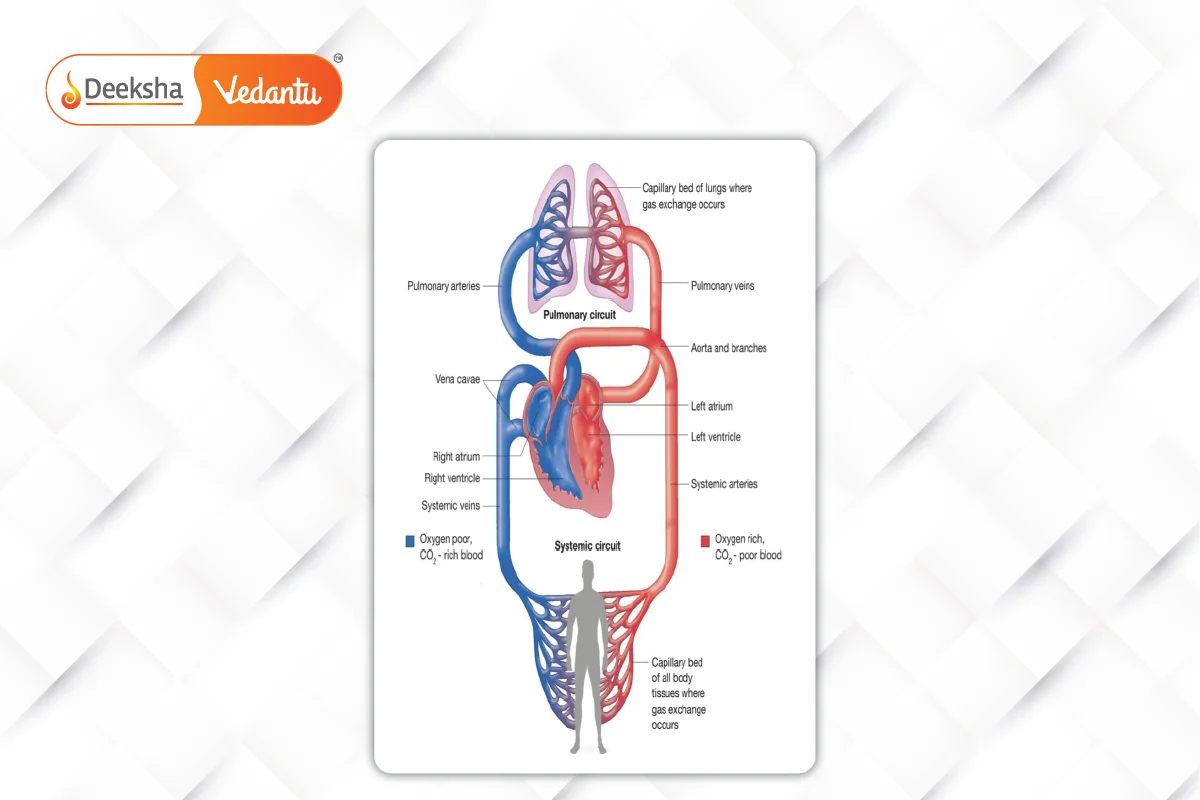
Transportation in Plants:
- Xylem: Transports water and minerals from the roots to the leaves.
- Phloem: Transports food (sugars) from the leaves to other parts of the plant in a process called translocation.
Real-Life Applications:
- Heart health: Understanding the circulatory system is crucial for diagnosing and treating cardiovascular diseases.
- Agriculture: Knowledge of plant transportation helps in improving crop yield through efficient water and nutrient management.
Practice Questions:
- Question: Explain the role of xylem and phloem in plants.
- Answer: Xylem transports water and minerals from the roots to the leaves, while phloem transports food from the leaves to other parts of the plant for growth and storage.
Excretion
Excretion refers to the process by which organisms remove waste products of metabolism from their bodies. This is crucial for maintaining homeostasis and preventing the buildup of harmful substances.
Excretion in Humans:
- Kidneys: Filter blood and remove nitrogenous waste (urea) to form urine.
- Nephrons: Functional units of the kidneys where filtration occurs. Each nephron consists of a glomerulus (which filters blood) and a tubule (which reabsorbs water and nutrients).
- Ureters, Bladder, and Urethra: These structures transport urine from the kidneys to the outside of the body.
Excretion in Plants:
- Plants excrete waste products through stomata in leaves and lenticels in stems. Excess water is excreted through a process called transpiration.
Applications:
- Dialysis: A medical process that replicates kidney function for patients with renal failure, allowing the removal of waste products from the blood.
Practice Questions:
- Question: How do kidneys help in excretion?
- Answer: Kidneys filter blood, remove nitrogenous waste (urea), and produce urine, which is then excreted from the body through the urinary system.
FAQs
Autotrophs synthesize their food through processes like photosynthesis, while heterotrophs rely on other organisms for their food.
Nutrition provides organisms with the necessary energy to carry out life processes, promotes growth, and maintains the body’s functions.
Enzymes act as catalysts that break down complex food molecules into simpler ones, which can then be absorbed and used by the body for energy and growth.
Specialized tissues, such as xylem in plants for water transport and red blood cells in animals for oxygen transport, allow organisms to efficiently carry out life processes and sustain themselves.
Energy is produced through the breakdown of glucose during respiration. This process generates ATP, which is used by cells to perform various functions.
Life processes such as nutrition, respiration, transportation, and excretion ensure that organisms maintain homeostasis, grow, and reproduce. Without these processes, organisms would not be able to survive.
Double circulation ensures that oxygen-rich blood is separated from oxygen-poor blood, improving the efficiency of oxygen delivery to body tissues.
While photosynthesis produces glucose (food), respiration breaks down glucose to release energy for cellular activities. Both processes are necessary for survival.
Enzymes catalyze the breakdown of large food molecules into smaller, absorbable molecules. For example, amylase breaks down starch into maltose.




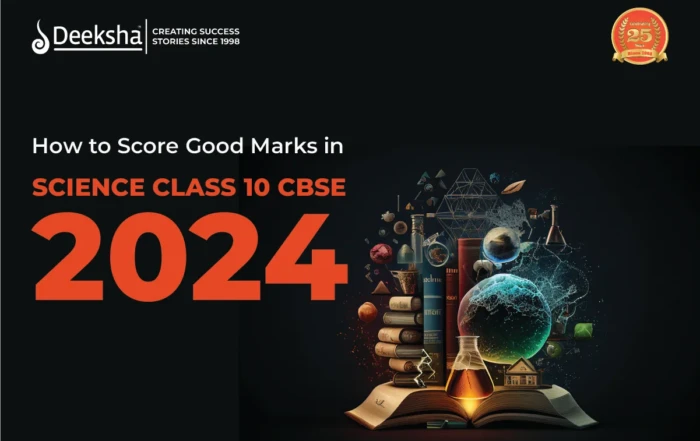



Get Social